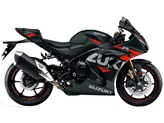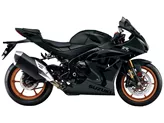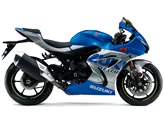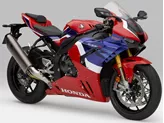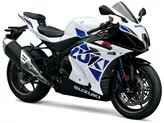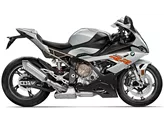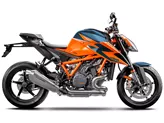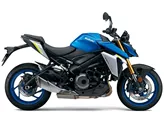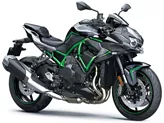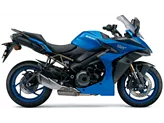Suzuki GSX-R 1000 R 2017 vs. Suzuki GSX-R 1000 2015

Suzuki GSX-R 1000 R 2017

Suzuki GSX-R 1000 2015
Overview - Suzuki GSX-R 1000 R 2017 vs Suzuki GSX-R 1000 2015
The Suzuki GSX-R 1000 R model year 2017 and the Suzuki GSX-R 1000 model year 2015 are both supersport motorcycles from Suzuki. While they share many similarities in terms of their technical specifications, there are some notable differences between the two models.
In terms of the engine and drive train, both models have an inline four-cylinder engine with a displacement of 999cc. However, the GSX-R 1000 R 2017 has a larger bore of 76 mm compared to the 74.5 mm bore of the GSX-R 1000 2015. This results in a higher engine power of 202 HP for the 2017 model, compared to 185 HP for the 2015 model. The torque output is also higher for the 2017 model at 118 Nm, compared to 116.7 Nm for the 2015 model. Additionally, the compression ratio is higher for the 2017 model at 13.2, compared to 12.8 for the 2015 model.
Both models feature Showa suspension components with adjustable compression, preload, and rebound settings for both the front and rear suspension. They also have an aluminum frame, with the GSX-R 1000 R 2017 featuring a twin tube, twin-spar frame, while the GSX-R 1000 2015 has a twin-spar frame.

Suzuki GSX-R 1000 R 2017
In terms of braking, both models have double disk brakes at the front, but the GSX-R 1000 R 2017 features radial, monoblock technology, which provides improved braking performance compared to the radial brakes on the GSX-R 1000 2015.
Both models have the same tire dimensions, with a front tire width of 120 mm and a rear tire width of 190 mm. They also have the same wheelbase length of around 1400 mm. However, there are slight differences in the seat height, with the GSX-R 1000 R 2017 having a seat height of 825 mm, compared to 810 mm for the GSX-R 1000 2015.
In terms of weight, the GSX-R 1000 R 2017 has a kerb weight of 203 kg with ABS, while the GSX-R 1000 2015 has a slightly higher kerb weight of 205 kg with ABS. Both models have a fuel tank capacity of 17.5 liters.

Suzuki GSX-R 1000 2015
In terms of strengths, the GSX-R 1000 R 2017 is praised for its high-revving engine, with no dents in the torque curve. It is also described as super stable on corner exit and radius, with a great quickshifter and high-quality chassis. It is particularly well-suited for fast tracks. On the other hand, the GSX-R 1000 2015 is praised for its sophisticated technology and the wealth of experience gained from years of successful racing. It also offers a wide range of accessories.
In terms of weaknesses, the GSX-R 1000 R 2017 is criticized for its non-adjustable engine brake and the fact that the wheely control is linked to the traction control. The GSX-R 1000 2015 is described as a "greyed model" and its electronics are considered to be no longer up to date.
Overall, the GSX-R 1000 R 2017 offers improved performance and features compared to the GSX-R 1000 2015, particularly in terms of engine power and braking technology. However, the GSX-R 1000 2015 still has its strengths, particularly in terms of its racing heritage and the availability of accessories.
Technical Specifications Suzuki GSX-R 1000 R 2017 compared to Suzuki GSX-R 1000 2015
Pros and Cons in comparison
Pros and Cons in comparison
Suzuki GSX-R 1000 R 2017

Suzuki has done a great job with the GSX-R 1000 R 2017. A powerful motorbike with a fabulously smooth torque curve. Actually unbelievable at 202 hp! The chassis is of high quality and the electronics package has no tinsel but delivers top performance.
Suzuki GSX-R 1000 2015

Many victorious years in international motorbike racing have made the GSX-R1000 superbike a legend - and a somewhat grey model. Real innovations or even revolutions are a long time ago, and the last updates were limited to visual upgrades, such as the MotoGP Replica paint scheme. It may look fresh and snappy, but in the segment of racers that have now advanced to technologically advanced and correspondingly expensive hyper-sports bikes, the GSX-R now looks like a slightly greying prototype. It still rides well, fast and harmoniously, you can just tell it's mature - and that's meant in a positive way. Nevertheless, we are already waiting for the next generation.
Price Comparison Avarage Market Price Suzuki GSX-R 1000 R vs Suzuki GSX-R 1000
There are a few key differences between a Suzuki GSX-R 1000 R 2017 and a Suzuki GSX-R 1000 2015. It takes less time to sell a Suzuki GSX-R 1000 with 83 days compared to 176 days for the Suzuki GSX-R 1000 R. Since model year 2017 1000PS.de editors have written 13 reviews for the Suzuki GSX-R 1000 R and 71 reviews for the Suzuki GSX-R 1000 since model year 2005. The first review for the Suzuki GSX-R 1000 R was published on 10/4/2016 and now has more than 197,700 views. This compares to more than 7,100 views for the first review on Suzuki GSX-R 1000 published on 3/3/2004.





